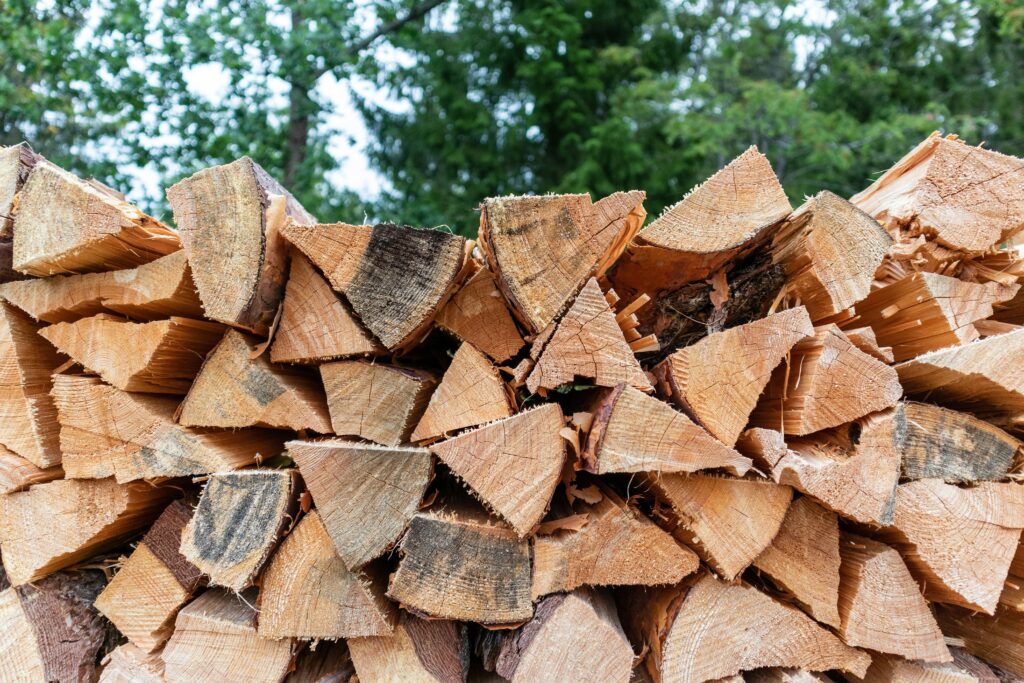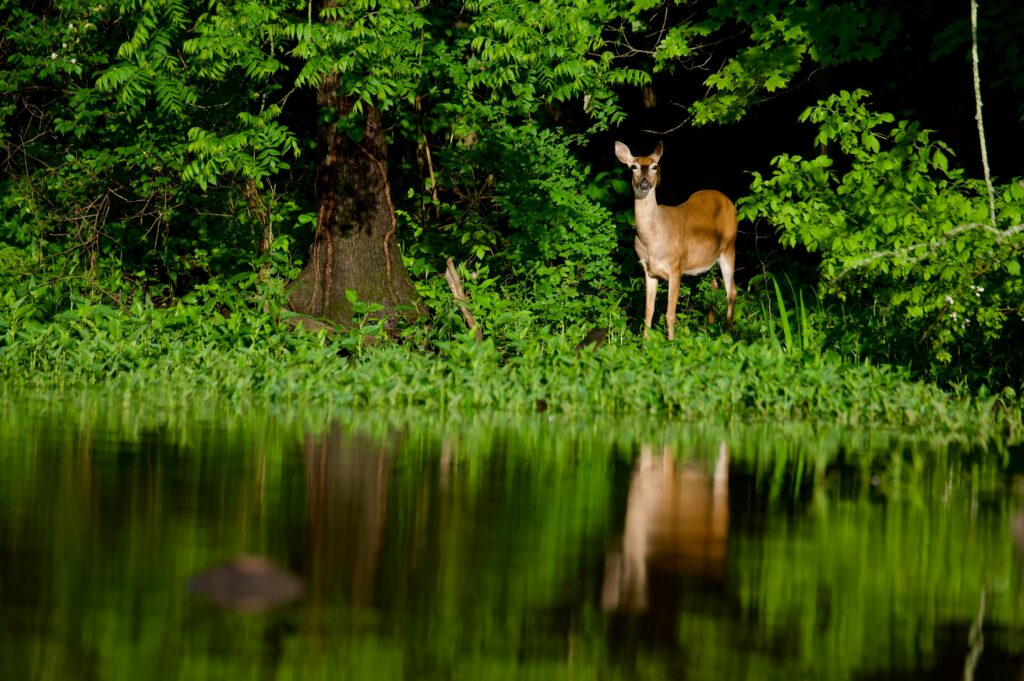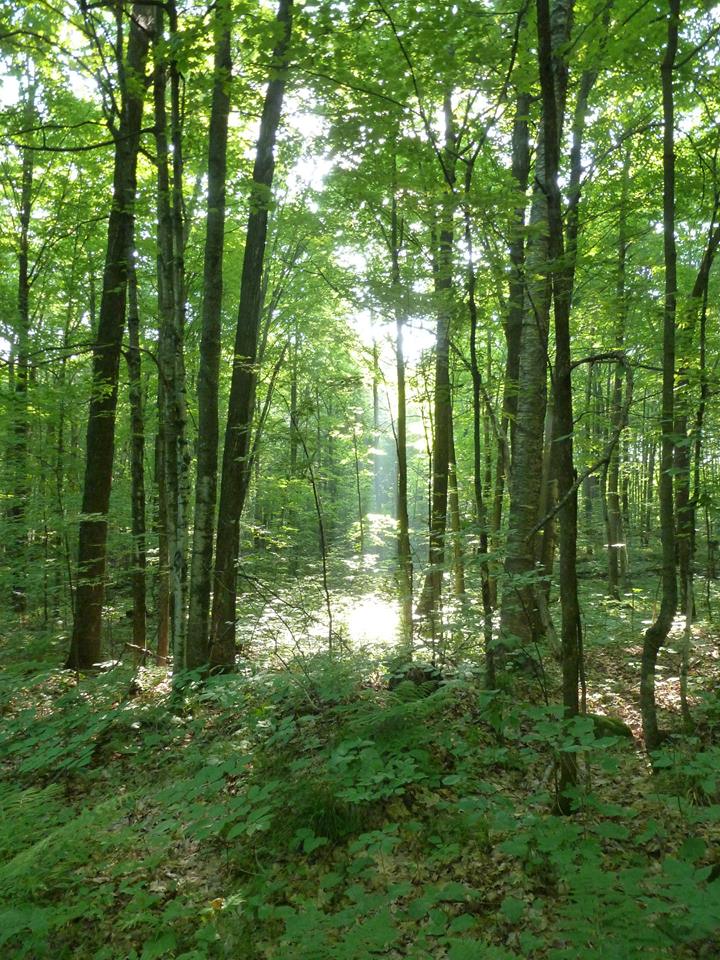
Is Managed Forest Law Right For You?
Read this article to learn more about why folks enroll, the misconceptions of the program, and how to get the enrollment process started!
By Denise Thornton
Is the Managed Forest Law (MFL) a program that would benefit you?
More than half of Wisconsin’s forest land is privately owned, and Managed Forest Law (MFL) was established in 1985 to encourage long-term stewardship, benefit timber production, wildlife habitat, water quality protection and recreational opportunities on private land.
Landowners applying to enroll in an MFL program are required to submit a forest management plan created by a professional forester, who works with the landowner. Thereafter, the landowner is obliged to carry out the stipulated practices over the course of that 25- or 50-year management plan.

Mandatory forestry practices in an individual MFL agreement can include:
• Harvesting timber according to sound forestry standards.
• Thinning plantations and natural stands for merchantable products.
• Releasing trees from competing vegetation.
• Tree planting to maintain necessary forest density.
• Treating before and after harvest to ensure adequate forest regeneration.
• Controlling soil erosion
MFL enrollment is open (with certain restrictions) to all private landowners of forested property and offers reduced property taxes as an incentive to encourage sustainable forestry practices on the estimated 11.5 million acres in family ownership.
To qualify, a parcel of land must be at least 20 acres, and at least 80 percent of that land must be productive forest. The acreage also needs to provide access for forest management equipment. To find all the details of eligibility, check this link to Wisconsin’s MFL program summary.

Landowners generally enroll in MFL for two reasons.
1. It is a way to connect with expertise about how to manage your land. “At various points in the program, the landowner is going to have to engage with experts in forest management,” says Cody Didier, DNR Forest Tax Law Compliance Specialist. At the time of enrollment, applicants must have a forest management plan written by a certified plan writer who is a cooperating forester who has been trained to write MFL management plans. “We also recommend landowners work with cooperating foresters or Wisconsin Master Loggers when implementing their mandatory practices. These are individuals who have expertise in forest management and can help landowners establish a practice that is consistent with their goals as established in their management plan.”
2. MFL is a way to get some tax relief. The MFL tax rates per acre are based on a statewide average of property tax for land assessed as productive forest, and target an 80 percent reduction. “For landowners in some areas, the tax reduction will be small because of lower-than-average local taxes,” says Didier, “and the juice isn’t worth the squeeze. On the other hand, some landowners may realize significant savings due to higher-than-average local taxes.”
MISCONCEPTIONS ABOUT MFL
Here are some common misconceptions that may be keeping your from experiencing the benefits of MFL enrollment.
1. The DNR will make me cut my trees.
There is an element of truth here. “Landowners in MFL are expected to follow sound forestry when implementing the practices prescribed in the forest management plan that they signed,” says Didier. “An MFL plan may not require actions until 25 or 50 years into the contract by which time an owner may not recollect parts of the agreement. The landowner needs to spend time with their plan writer. You can have a voice in influencing what type of management you want to see on your property.” Even after enrollment, the program, the law, and the principles of sound forestry offer flexibility to address current forest conditions.
2. The DNR is making me clear-cut my woods.
“Clear-cutting has negative connotations in many people’s minds, but for some of our forest types, it is a good way to regenerate that forest,” Didier says. “A timber harvest can be jarring, but there may be a really old pine or oak woodland that requires a harvest that resembles a natural disturbance to regenerate a new woods filled with vigorous seedlings. If a landowner is having trouble with a clear-cut that they previously agreed to, but don’t want to clear-cut yet — we can revisit their plan and amend it (consistent with sound forestry practices). In some cases that level of heavy management might be what is most appropriate, but in a lot of cases, we can find some flexibility in terms of modifying the management to be more in line with a landowners’ current goals for their forest.”

3. You must let the public hunt on your property.
That’s a possibility but does not have to be the case. ”MFL has two options: open to public access and closed to public access,” says Didier. There are rules about how much land a landowner can close in a given municipality, but for the most part MFL landowners can make the choice to close or open their land to recreation.”
Open designation allows the public access for hunting, fishing, hiking, sight-seeing, and cross-country skiing without additional permission from the landowners. Landowners can prohibit motorized vehicles on their MFL land, and unless the owner decides to let a snowmobile trail go through their property, the public cannot use snowmobiles or ATVs without landowner permission.
Owners of MFL land may modify their Open or Closed designation without a fee twice while their land is in the program, or when all or part of the MFL land is withdrawn or transferred. See Public Access in the Program Summary.
If a landowner enrolls in MFL and closes their land to public recreation, they receive a lower tax reduction versus enrolling in the open to public MFL. The tax rate is roughly $2 an acre for Open to public access and $10 for Closed. See the details in the DNR website Forest Tax Rates. These rates fluctuate based on a 5-year average of state-wide productive forest assessment.
4. MFL won’t let me have any old-growth forest on my MFL land.
“Land owners can use forest management to promote old-growth-like features,” says Didier. “You can practice forestry in a way that pushes your forest toward more old growth characteristics.”
The law allows for up to 20 percent of a 40-acre area to be non-productive, if part of the property is not capable of producing a forest, for example an area of swamp or marsh. Prairie can also be part of that nonproductive 20 percent. But it could also be a productive forested area that a landowner may be managing with an eye to old growth. There is an opportunity for that as well in MFL.
“Putting the whole 40 acres into old growth may not be compatible with the program because the focus of the program is forest production,” adds Didier. “A lot of our rotations for trees involve cutting them for peak ripeness based on economic considerations. However, you can go toward an extended rotation to the later end of an acceptable cutting age. Remember, letting trees grow for extended periods means they may become less ideal for timber production.”

WHEN TO ENROLL
“Right now enrollment for getting into an MFL program for 2026 is closed,” says Didier. Plans for 2026 were submitted by June 1, 2025, and DNR tax law forestry specialists are currently reviewing and approving those plans. Once approved, they will become effective January 1, 2026.
Plans for 2027 must be submitted by June 1, 2026. The first step involves reaching out to a certified plan writer. They are the ones who will guide you through the initial process. The DNR has an online directory to help you find the certified plan writers who work in your county.
“Landowners who are interested should start looking for a plan writer as soon as possible. Waiting till a few months before June 1 could make it really tough to meet the deadline,” says Didier. “There are arguably not enough plan writers out there, and many are booked up for two years already. I would encourage landowners to take the time to find the plan writers who is the best fit for them. There are several hundred foresters out there doing this work, and they all have their own individual experience and take on forest management.
